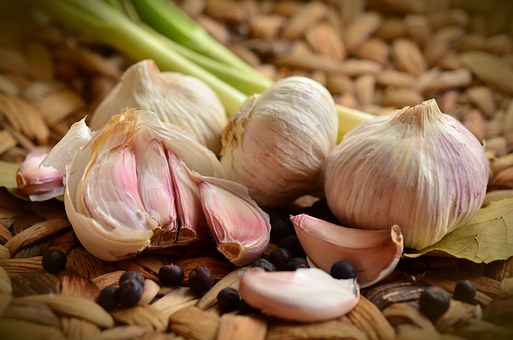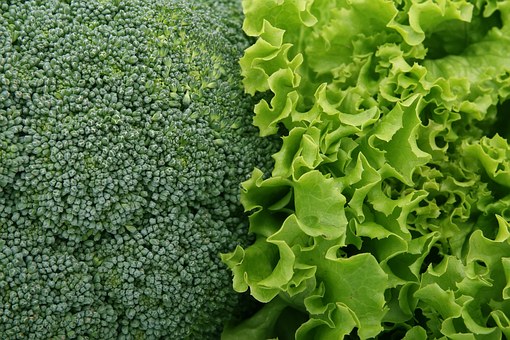Are You Drinking Living Milk Or Dead Milk?
© HealthyMuslim. See Terms and Conditions

Are you drinking raw unprocessed milk or pasteurized, homogenized milk?
Well, let's first illustrate the difference. Which of the following is the more natural, healthier and wholesome food? One is a raw apple, the other is an apple strudel.

I'm sure you will agree that the raw apple is the more natural, healthier food. The other (in the apple strudel) is a cooked food. Well there is your answer!
If you are drinking pasteurized milk, then you are drinking dead, cooked milk. And that's just half the story. Milk is also "homogenized" and "standardized". When you go to your superstore or local grocery store to pick up some "pasteurized, homogenized" milk, you are not getting real, natural, wholesome milk. You are getting "cooked milk" in which the most beneficial elements have been either killed, depleted or made inert.
Pasteurization is when the the milk is heated usually to around 72 degrees celsius for a short time, after having been treated at around 65 degrees celcius for around 30 minutes whilst in storage. This results in dead bacteria and dead white cells that form pus - this stays in the milk. European and US law allows up to 400,000 and up to 750,000 cells of pus per one cubic centimeter respectively, to remain in the milk.
Pasteurising milk destroys the beneficial bacteria acidophilus, the vitamins C, B12 and B6 and the digestive enzyme required to break down the protein in the milk. Also, as the bacteria's cell is broken and debris is scattered, histamine is released into the milk from the bacteria. This explains why there are so many dairy allergies and problems of eczema amongst children. Its because of pasteurized (cooked) milk.
Homogenization is when milk is put through tiny tubes (very small holes) at very high pressure in order to reduce the size of the fat globules. This makes the milk more even and will not result in separation of the fat from the milk in the form of a creamy layer at the top of the milk.
Homogenization is also used to partially address the problem of the pus that is formed as a result of dead bacteria and white cells.
The above two processes allow the milk to keep for longer for consumption purposes. But the difference between this cooked milk and live milk is immense. And we haven't even touched upon the growth hormone and antibiotics used that inevitably come through into the milk you drink - but we'll leave that for another article.
Expert Testimony From A California State Court Session
We're going to quote from a transcript of a court session in relation to the raw milk and pasteurized milk issue. This took place in the state of California and was in relation to a legal issue between the state and two farms providing raw, unprocessed milk.
The Court hearing involved two expert witnesses who speak about raw and pasteurized milk, the difference between them and food safety protocols and testing procedures. Its a 78 page document which you download yourself further below. We are going to reproduce just some of the expert witness testimony here to give you the essential points.
The two expert witnesses are very highly qualified individuals whose outstanding credentials are given within their expert testimony under cross examination. So you can be assured about the authority of their information and viewpoint.
Just to give a little background, the issue under investigation in this court session is to do with whether a testing standard used for pasteurized milk can be applied to raw milk, and in light of which essential differences between raw and pasteurized milk are brought to light.
Dr. Theodore Beals
Dr. Beals worked in Department of Epidemiology in the School of Public health, licensed as a Medicinal Practitioner, board certified in Anatomic Pathology after five years specialized training, published over 70 articles in peer-reviewed journals, has published a book related to pathology, served for 31 years as a pathologist at a Medical Center and taught Pathology at the University of Michigan to graduates and medical students, and was eventually made Chief of Pathology at the Pathology and Laboratory medicine Service in an Ann Arbor Medical Center. Later he served as the National Director of Pathology and Laboratory Services for the entire VA Medical Administration in the United States (which includes over a 100 medical centers across the US). He also served on the Scientific Advisory Board for the Armed Forces Institute of Pathology. He was called to give testimony on this matter.
Question: Okay. Dr. Beals, based on your background, education, training, your experience, do you have an opinion to a reasonable degree of scientific certainty whether milk that is unpasteurized is safe for human consumption?
Dr. Beals: My opinion is that it is, and historically it's been shown clearly that it is. Pasteurization was only introduced in about 1900. And the history of human consumption of milk goes back well before recorded history. And as a matter of fact, in recorded history we know that the domestication of animals for the purpose of providing fluid milk for human consumption is present in almost all civilizations across the world. And recorded history and historians have well documented the fact that this consumption of milk was in fact very advantageous to civilization. It was advantageous for cultures that migrated because they were able to take domestic animals with them and have a continuous supply of fluid milk. And it's well recorded also in history that the ability to take domestic animals that provided fresh milk with armies as they moved across the country was a distinct advantage to them.
If a food is unsafe for consumption, it is very quickly eliminated from the diet of cultures. And in fact history shows that the consumption of milk from domestic animals has persisted throughout history, and on the basis of that, I don't believe that there's any argument but that the consumption of fresh milk is in fact safe, confers competitive advantage to those that drink it.
Later in the same session ...
Question: Do you have an opinion about whether or not milk must be free from bacteria in order to be safe for human consumption?
Dr. Beals: And the answer to that is that it does not need to be free of bacteria.
Later ...
Question: You said that scientists need to know how do pathogens -- how do pathogens get into milk, and my question is: Which is more likely to have a pathogen in it? Some raw, fresh, unprocessed milk that has good bacteria in it or pasteurized milk where all the bacteria has been killed?
Dr. Beals: pasteurized milk where the beneficial bacteria have been killed.
Note a "pathogen" is a disease causing organism or entity. Dr. Beals says that pathogens are more likely to be found in the pasteurized milk where all the beneficial bacteria have been killed.
Dr. Ronald Hull
Dr. Hull is a PhD in Microbiology, thesis on bacterial antibiotics called colicins produced by E.Coli of interest today in food systems and medical health. Postdoctoral fellow in Pathology at Stanford Medical Center, worked on cancer research involving the E.Coli model. Worked as a research scientist for Commonwealth Scientific Industrial Research Organization that researches and develops rural industries in Australia including the dairy industry. After five years he became the head of the dairy microbiology section within the division of food science, and worked for twenty years in total for the organization. His work was related to medical pathology, spoilage and pathogenic bacteria in dairy microbiology. Australia and New Zealand contribute to more than half of all international trade in dairy products, and Dr. Hull is involved in an organization that oversees the very high level of technology needed to meet those markets and the meeting of microbiological standards for such foods. Dr. Hull then became a microbiology consultant to the dairy industry, and also serves on government regulation committees.
Question: Have you published research on that subject?
Dr. Hull: Yes, I have. If Listeria, for example, is inoculated into raw milk, then they're killed actively by the raw milk's natural antimicrobial systems.
Question: Did you say killed?
Dr. Hull: Killed, yes.
Question: How much time does it take before the Listeria is killed?
Dr. Hull: If you inoculate 10,000 Listeria into raw milk, then in 48 hours they're all killed. That's at body temperature.
Question: Was that research published in a peer review journal?
Dr. Hull: Yes, it was.
Further in the same session ...
Question: Dr. Hull, let's describe milk a little bit.
Dr. Hull: Yes.
Question: Is all milk the same?
Dr. Hull: No, definitely not.
Question: What types of milk are there?
Dr. Hull: Well, there is raw milk. Raw market milk, I'll describe first, is a living food. And on the other hand we have pasteurized milk, which is a cooked -- I would describe it as a dead food. The raw market milk is living just as you and I are living because it contains a number of live components. The first one -- the first component is the competitive flora, which are the same microorganisms that live inside of our intestinal tract when we're healthy. It's the same flora that's used to make cheese and yogurt. That competitive flora competes out other pathogens. And we use that in commercial production. We have available to us now strains of lactic acid bacteria for use in specific ferments which will kill all of the pathogens which can exist in that particular product. So that's highly developed science. And not only is it science, but it's in commercial practice.
Question: What's the second component?
Dr. Hull: The second component is what nature provided in milk from the mammal, and that again we refer to as innate immunity. Innate immunity consists of several components, at least five or six components. There are probably more, but for today we'll just discuss a few of them. The first one is raw milk contains white cells, which if you like are the --
MS. RUUD: I'm sorry?
THE WITNESS: Contains white cells -- sorry if I didn't say it clearly -- which are the same cells that our immune system, our innate immune system, uses to combat infection. That same system is in milk and operating when it's drawn from a cow. We then have a subset of enzyme systems which are destined to kill pathogens which get into milk. And just to mention five of those systems, there's the complement system, which I'll just mention the temperature of inactivation as we go. The complement works with the white cells. It's inactivated at temperatures -- I'm going to use Celsius here -- 56 degrees Celsius. I apologize. We have been using Celsius now for about 35 years, and I have difficulty converting back to Fahrenheit. Although I did learn Fahrenheit at school. So we have complement, which is inactivated at 56 degrees, which is way below body temperature. So it's just a little above body temperature. Body temperature is 37 degrees, just for reference. The second element is the lactoperoxidase system, which is inactivated at 82 degrees centigrade. And the third one is lactoferrin, which is inactivated at about 95 degrees centigrade, which is nearly boiling. And the last one, last enzyme, survives boiling.
So if we look at pasteurized milk, the white cells are killed, the complement system is killed, but the other three remain active. So we've essentially killed off half of the innate immunity in milk.
Question: And innate immunity, that's the second component of raw milk that makes it a living food.
Dr. Hull: That makes it a living food. The third component is --
Question: Let me get a question on the record. What's the third component?
Dr. Hull: Thank you. The third component is a group of enzymes which digest the milk. Milk consists of fat, proteins, carbohydrates, and minerals. They're in a very complex state in milk, very concentrated form, and very difficult to digest without those enzymes. Those enzymes there are specifically to digest each of those components down into smaller molecules. Those smaller molecules are the things that we absorb when we drink milk. They're also the nutrients for the competitive flora, the number one living system in milk. So the natural enzymes in milk actually foster the protective flora in milk. And so the three work together. But in pasteurized milk, or cooked milk if you like, those systems are essentially dead.
So the two milks are very different. One is a living food. And I've brought an apple up with me. This is a living food. When we cook it, it's a dead food. And raw milk is like the apple. Cooked, the pasteurized milk is like the apple strudel. And food safety issues with these two products are very different.
Later in the session ...
Question: Well, let's talk about the difference, then, between a glass of pasteurized milk and a glass of unpasteurized raw milk.
Dr. Hull: Yes.
Question: If you set those two milks out and let them sit at room temperature, what happens to them after a certain period of time?
Dr. Hull: Thank you. If we set raw milk, which is the living food, aside at room temperature, it will curdle, and that product is perfectly safe to drink. If you set it aside at body temperature, in other words, if you carry it around in your pocket or sit it next to the stove at body temperature, it will also curdle or sour, and that product is perfectly safe to drink. It will not make you sick. In contrast, if you set aside pasteurized milk at room temperature or body temperature, it will spoil and putrefy, and if you do drink it, it will make you sick. In fact it may make you very sick. So the two products have a quite different behavior if just left at room temperature or body temperature. Now, the same thing happens when we drink those products. One turns to a sour yogurt-type product; the other one putrefies. And I think the two products are quite different in that respect.
Later ...
Question: Does raw milk with a built-in immunity system, then?
Dr. Hull: Yes, it does.
Question: And because of that immunity system, can raw milk be subjected to a less, quote, clean environment?
Dr. Hull: Yes, definitely. And that's part of the reason I brought this apple here. I can leave this apple sitting around for I don't know how many weeks in California, but certainly at home an apple or orange can sit on the kitchen table or outside for many days and still be fine to eat. Not a health hazard, not a food safety issue. But if we cook that product, then we cannot do that. We have to protect it from contamination, from infection, from the environment because it has no longer living immunity in the apple.
You can download the full transcript in PDF here: Expert Witnesses Defend bacteria in raw milk
Right click and select "Save As" or "Save Target As".
What milk Should You Buy?
If you are in a position to get raw milk, you should try it. Just ensure that the farm you are buying from has established hygiene standards in the collection and bottling of milk and also have pathogen count tests on their milk. They should give you this information if you ask. Here are some resources to help you find raw milk providers:
For the vast majority of people it may be difficult to get raw unprocessed milk. In that case you should try to buy organic pasteurized milk which is NOT homogenized. If you can't get it organic, then get pasteurized non-homogenized milk. By doing this, you are limiting the extent of the problem with processed milk. If its organic, which means the cows are pasture fed, then even if it is pasteurized, it is milk that will have better quality. So your ideal choice in the absence of real milk, is organic, pasteurized but non-homogenized milk.
Alternatively, you should try making your own almond milk, which is what we do, in addition to sourcing raw milk and buttercream. It's great with a healthy cereal. By the way the vast majority of cereals are not healthy - despite the propaganda - but we'll have to leave this for another article.
Link to this article: Show: HTML Link • Full Link • Short Link
Share or Bookmark this page: You will need to have an account with the selected service in order to post links or bookmark this page.





|
Related Articles:
- Are You Drinking Living Milk Or Dead Milk?
- Drink It Raw: Great Article On Unprocessed Milk
- Untreated Raw Milk Gains in Popularity and Demand
- Frequently Asked Questions on Raw Untreated Milk
- How To Make Almond Milk
You must be registered and logged in to comment.
Most Popular
Latest Articles
Popular Subjects
Health, fitness and longevity
Based upon the principles of health
in the Qur'an and Prophetic Traditions.
HealthyMuslim.Com
There are two bounties in which
most people lose out: good health
and free time. Al-Bukhari.























